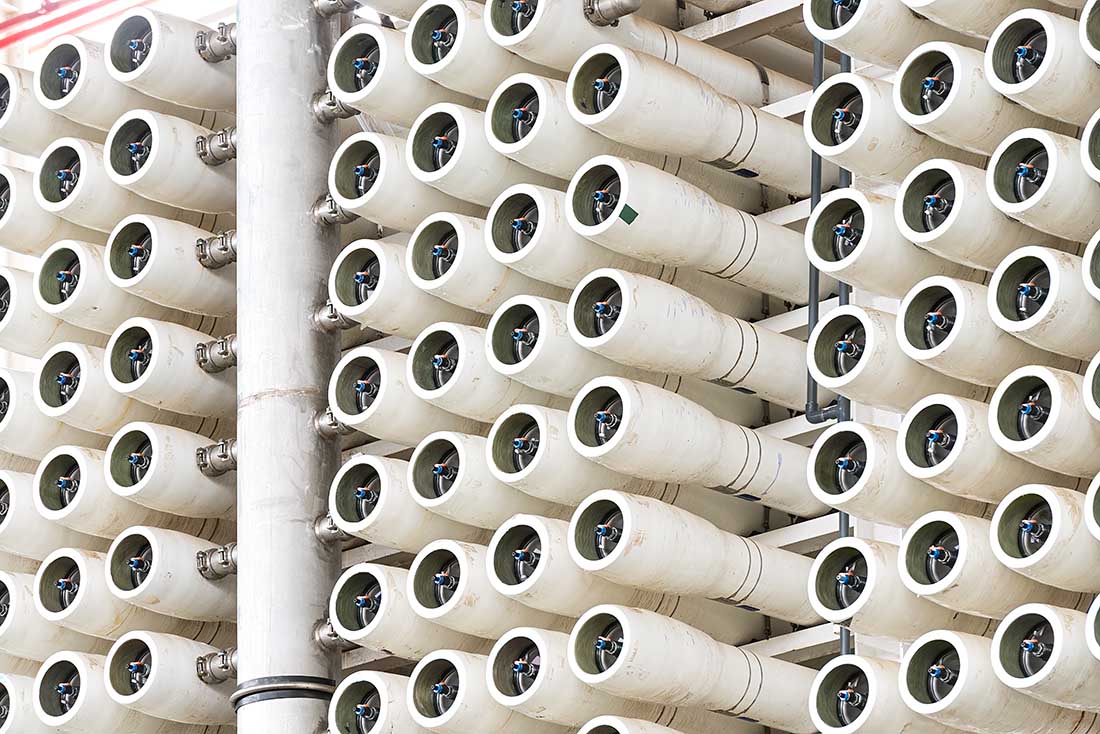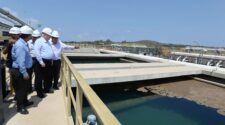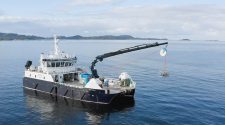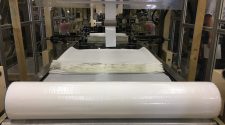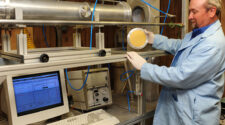The leading modern method of removing salt from sea/briny water is a process called reverse osmosis (RO). This is the primary filtration technology utilized for removing salt from water and is based on a composite filter structure that is spirally wound to create a filter element. The wound module is constructed using flat sheet filter media, membranes and a highly porous support plates. There are also pretreatment filters prior to the spiral element that do not have membranes but utilize porous medias to remove particulate that is much larger than salt.
Pairing the two technologies together, the prefilters and RO form an integral part of the desalination process. The key function of the pretreatment system is to remove particulate in the form of microorganisms, silt and other suspended solids. This pre-cleans seawater or briny water and helps to protect and extend the life of a spiral wound filter module. Around half of the water fed into a reverse osmosis system is utilized as wastewater with a much higher salt solution. How much brine is produced is highly dependent on the source of the water. This concentrated brine can be dumped back into the ocean, injected underground or spread over the land.
Desalinization technologies continue to evolve over the years as new filter designs are emerging. Reverse osmosis filtration is a multifaceted process with many variables: water pressure, volume, salinity, recovery ratio and time and energy to name a few. A minor percentage improvement to the process in any of these areas can yield an immense amount of saving due to the size and nature of a facility. Membrane fouling is the greatest area of potential innovation as these values are all impacted due to membrane contamination. Surface modification is utilized to change the surface properties of a RO membrane to augment its hydrophilicity, topography, and antifouling properties, which can lead to higher membrane performance.
There are several methods for converting brine into worthwhile products using standard chemical processes, including using nanofiltration to remove detrimental compounds and one or more electrodialysis stages to produce an end product. Sodium hydroxide and hydrochloric acid are two chemicals that can be made from the brine waste. Hydrochloric acid can be utilized as a cleaner and could also be utilized in the production of hydrogen. There are other possibilities including selectively removing metals and other chemistries from the affluent. While this is not necessary, a new concept it is one worth looking at to increase the sustainability of the system. It seems somewhat counterproductive to take salty water, remove the salt and pump it back into the ocean to dilute and then pull from the system again. This type of loop yields clean drinking and irrigation water but doesn’t balance the system or utilize the resources to its full potential.
A recent article in USA Today from August 13, 2022, cited rainwater is now unsafe to drink worldwide due to per- and polyfluoroalkyl substances (PFAS). The need for clean water for drinking and irrigation is now at a new level. Water filtration has never been more important.
Water quality in terms of salinity is best expressed by the concentration of total dissolved solids (TDS). TDS concentration is the sum of everything in the water: minerals, metals, anions and cations that are all dissolved in the water. There are two principal methods of measuring total dissolved solids: gravimetric analysis and conductivity. Gravimetric methods are the most empirically accurate as it involves evaporating the water and measuring the mass of residues left behind. Conductivity provides an approximate value based on electric current in a meter.
The U.S. Environmental Protection Agency (EPA) has set the Secondary Maximum Contaminant Level (SMCL) for TDS in potable water below 500 mg/L and in drinking water at TDS desirable concentration of <200 mg/L. Seawater has a TDS of 30,000-50,000 mg/L. To put this in perspective seawater has a thousand times more solids in it than drinkable water. That is a LOT of filtration that needs to happen.
The opportunities for RO desalinization membranes will continue to be strong. There are many factors driving the growth of desalination. A recent article in USA Today from August 13, 2022, cited rainwater is now unsafe to drink worldwide due to per-and polyfluoroalkyl substances (PFAS). The need for clean water for drinking and irrigation is now at a new level. Water filtration has never been more important and RO filtration is uniquely positioned to meet the immense environmental and human health challenge. This technology can be utilized for not only pulling salt from seawater but cleaning toxins from the environment. Water is the universal solvent and it is capable of dissolving a variety of molecules. In the human body, water’s role is to help cells transport and use substances like oxygen and other nutrients. Water doesn’t distinguish between what we may need or what can be harmful and has the capability of dissolving more substances than any other liquid. That fact makes it important to every living organism on earth.
The outlook for desalinization for the next 10 to 15 years will be one of explosive growth, in my opinion. Desalinization of water from around the world will be needed for drinking, irrigation and manufacturing. It’s unintended consequence may be a technology for environmental cleanup as well as producing drinkable water. I can envision a system of water desalinization in which the filtered water is pumped up an incline via solar power and utilized as a kinetic energy battery. This clean desalinized water will flow through hydroelectric stations to recapture energy in a system. The salt that is removed from the system can be utilized for other alternative energy for creating hydrogen and/or being utilized in molten salt solar power generating systems. Water is the most abundant molecule on the earth and approximately 97% is in the oceans which is too salty for people, animals and plants to use. Desalinization via RO will continue to evolve and provide a circular solution for global fresh water.


